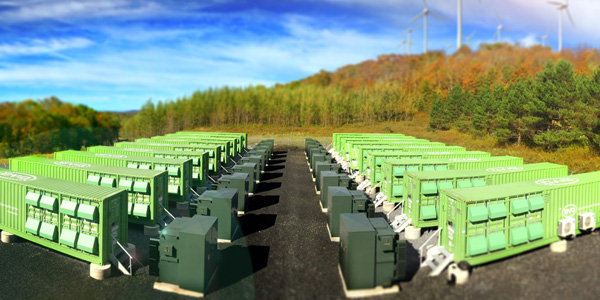By Amanda Durish Cook
CARMEL, Ind. — MISO and stakeholders are hoping to complete policies allowing storage to qualify as transmission for the RTO’s 2019 Transmission Expansion Plan (MTEP 19).
The RTO hopes to file its first plan to allow storage as a transmission asset (SATA) with FERC by June. Initially, proposed SATA will only be allowed to solve transmission reliability needs and will be ineligible to simultaneously participate in MISO’s energy markets. The RTO currently has one reliability-based storage project proposal lined up for evaluation in MTEP 19.
“This storage-as-transmission [development] process is really short. … Folks want to get this right. Backtracking on policy once it’s been filed and accepted isn’t impossible, but it’s a really heavy lift,” Energy Storage Task Force Chair John Fernandes said during a Jan. 24 meeting. Fernandes commended MISO’s initiative on envisioning storage in the transmission realm, saying it is one of the first markets nationwide to do so.
“Storage might be able to go in where others can’t due to permitting,” Customized Energy Solutions’ David Sapper said.
The Energy Storage Task Force will hold a workshop on storage functioning strictly as transmission on Feb. 14. Ahead of the workshop, Fernandes urged stakeholders to think about how such projects would advance through the MISO stakeholder process and what criteria they might have to meet.
No Mixed-mode SATA, yet
MISO Director of Planning Jeff Webb said the RTO is choosing to “carve up” the SATA concept into less complex uses so it can better understand it and plan incremental approaches.
For now, MISO is proposing that SATA function solely as transmission — solving thermal, voltage or stability issues — and precluding it from energy market participation. MISO said it will develop rules for mixed-mode SATA use later. “We don’t know how to mix those two just yet,” Webb said.
Because mixed-use storage will not be permitted at first, the RTO will not require SATA to enter its generation interconnection queue. However, MISO does plan to model previously approved SATA in its interconnection studies. It said it will consider SATA’s “capabilities to inject or withdraw energy as needed to best mitigate reliability issues” as part of the network upgrades study during the definitive planning phase study in the queue.
SATA will also be modeled in MTEP reliability studies. MISO said it will gauge a proposed SATA project’s ability to “resolve the identified transmission issue at specified critical system conditions, consistent with the facility design capabilities.”
MISO said it will also create a special interconnection agreement among it, the storage owner, and the transmission system that the SATA is connected to. SATA operators must also complete MISO’s market participant registration.
MISO in Functional Control
MISO proposes SATA be compensated like other transmission owners, with the storage facilities under the functional control of the RTO. MISO said keeping functional control of SATA will be practical as storage owners inevitably transition to mixed-mode use.
“MISO contemplates that most SATA will eventually desire to participate in markets in addition to providing cost-based transmission services. The ability to coordinate use of the asset in this mixed mode requires MISO as market operator to instruct the charging and discharging of the SATA for the provision of transmission services,” the RTO said. “Independent market operator control of the device for transmission service purposes will enable accounting for energy injections and withdrawals whether such transactions are instructed by MISO for transmission service purposes or as cleared market transactions. Further, control of the device by MISO for transmission purposes will mitigate concerns about inappropriate use of the device to the advantage of any particular market participant.”
Hisham Othman, of transmission and distribution consulting firm Quanta Technology, said reliability should always take precedence over any market benefits for mixed-mode SATA. He also said reliability requires very fast SATA controls, able to respond within a millisecond following a contingency to restore voltage and mitigate line overloads.
After stakeholder questioning, Webb said MISO will seek to quantitatively evaluate the benefits of SATA in the MTEP process as it’s able to recognize them. “If we can understand them and repeat them, then we’ll document them,” he said.
Some stakeholders asked if MISO might evaluate storage projects based on how mobile they might be. But Othman said there’s upgrade costs to be considered when a storage asset is physically moved to serve another area. “The reality is there’s a cost to picking it up and moving it.”





